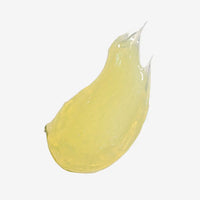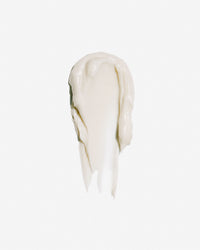Should we always wear sunscreen?
Dr. Sylvie Peres : Indeed, that would be preferable. It's important to know that UVA rays pass through windows, and it seems that windshields block them more than other types of glass. Also, the blue light from screens is said to be oxidizing and therefore promote aging and stains.
What ritual do you recommend?
For the face, I recommend a sunscreen with an SPF 50+ to be applied first thing in the morning instead of moisturizer. The formula of our SPF 50+ moisturizer is rich in anti-inflammatory and anti-free radical active ingredients to prevent photo-induced skin aging. Its organic vegetable oils have been carefully chosen for their nourishing properties and their affinities with the skin. I recommend an SPF 30 for the body and on the face, only for low exposure (in duration and UV index).
What are the benefits of the sun?
The sun is beneficial for the synthesis of melatonin and serotonin, and the regulation of immunity. It is also essential for the synthesis of vitamin D, but for this: 20 minutes of daily sun exposure of the hands, face, legs, or forearms is sufficient. But above all, it is outdoor physical activities that are good for your health. They fix calcium and prevent osteoporosis.
Should we use sunscreen the same way at the beach as in the city?
Dr. Sylvie Peres : Whether at the beach or in the city, the difference is the surface area exposed! So I would differentiate between two issues: body exposure and facial exposure.
For the face:
Women have always fled the sun, here it was umbrellas and gloves, in Asia a rice powder mask, in Africa clay... They were not afraid of aging, they did not exceed 50 years old. Women were (still are in many countries) a "tradable good" and they had to keep their radiance, we spoke of porcelain skin, the glow of Korean women. Why is babies' skin so beautiful? It hasn't seen UV rays!
Tanned skin used to be the marker of those who worked in the fields, but it's only since the 70s and the sea, sex and sun trend that a tanned complexion has become the sign of the wealthy classes who go skiing or to the beach.
I recommend very strict protection of areas exposed on a daily basis (face, neck, décolleté, hands): it is the best anti-wrinkle . Photoaging caused by UV rays, in addition to wrinkles, causes the skin to lose its radiance and transparency . This is due to dilated vessels and an infinity of pigmented micro-spots that I show my patients with video microscopy: the result is a blurred complexion. Look at the skin of the breast (if you do not expose them), it looks much younger than that of the décolleté, which is close by. Note that for the décolleté and neck, the skin is extremely thin with fragile microcirculation that will dilate even under high SPF creams , leaving unsightly telangiectasias. For these areas, always bring a cardigan, a scarf or wear your T-shirt for the unplanned meal on the terrace!
For the face, I recommend a sunscreen with an SPF of 50+ and a hat.

For the body:
The best protection is shade and clothing. I make my patients very aware of unconscious sun , the sun we take without thinking about it, while walking every day, in our garden or during sports activities… These chronic exposures are a factor in aging and skin cancer and sunburn , especially in young people, is even more of a risk. So, get dressed! Light pants, a long-sleeved T-shirt or a shirt: they provide total protection, no need for anti-UV clothing, no need to slather on cream every 2 hours. It takes a little thought to adapt and find a pleasant compromise: gardener's outfit when gardening, swimsuit when swimming!
On the other hand, afterward, we dry ourselves a little in the sun and get dressed again. At the beach, a T-shirt or a sarong and half of the body is completely protected. For sports, I have patients who surf or sail who keep leggings on, and on the coast, more and more surfers keep a full wetsuit on even in summer. There are now highly developed technical and breathable materials.

Is it possible to get a nice tan while protecting your skin from the sun?
I insist that very little sun is needed for a beautiful color; anything else damages, fades, and ages. Try it, and you'll see your skin will be golden, less dry, and your tan will last longer.
I'm not talking about phototype , we know that the more blond, or even red-haired, you are, with light eyes, the more fragile you are, but ultimately I also see a lot of cancer in brunettes who think they are safe and don't protect themselves!
discover our sun care for the face and body
Why did you want to develop sun care products?
Dr. Sylvie Peres : Living in Biarritz, I protect myself effectively from the sun's harmful rays by covering my body as much as possible. For my face, the choice available on the market did not satisfy me. On the one hand, sunscreens with invisible chemical filters , but containing endocrine disruptors, on the other, physical filters , very effective, but leaving white marks.
To address this issue, I wanted to create a very high protection sunscreen with physical filters without nano-particles which act like small mirrors to which I added natural pigments which have the particularity of reinforcing protection while giving a pretty complexion .
How to choose the right SPF?
Dr. Sylvie Peres : The higher the index, the better the protection against sunburn. The SPF (Sun Protection Factor) is an international standard. It is the ratio between the UV dose needed to get a sunburn with and without sunscreen. It is calculated in a laboratory, and the same tests are used for organic and non-organic sunscreens.
A back covered with a cream that contains sunscreens at a rate of 2 mg per cm² (it is never applied that thickly) is exposed to a source of UV B radiation. If a sunburn appears after 10 minutes without protection, an SPF 15 means that it will take 150 minutes (i.e. 15 x 10 minutes or 2.5 hours) to get the same sunburn with this sunscreen. So the higher the index, the better the protection against sunburn.
These stories of indices are complicated, falsely reassuring. I like to simplify and say that an SPF 50, which is the maximum European standard, corresponds to 50% protection for 2 hours and if it is applied in a thick layer. This is why I give these additional rules (shade, hat, clothing) which will be all the stricter as the exposure is extreme (tropical, altitude and prolonged stay).
Let's also remember that you should avoid being out in the sun between 10 a.m. and 2 p.m. Animals that are more sensible than us stay in the shade at these times, even though they have fur or feathers. In addition, we are 2 hours behind the sun, so if you go out at 4 p.m. it's actually 2 p.m. and at 7 p.m. (5 p.m. in reality), the sun is still strong, so it's best to go in the morning.
Also take into account clouds, wind, glare, and the UV index . It is defined by the WHO and is a scale for measuring solar health risk. In Europe, it ranges from 1 to 8 - maximum risk. It corresponds to the movement of the hole in the ozone layer, and if it is above you, the sun will be much more dangerous.
How are chemical filters dangerous?
The colorless chemical filters in classic creams are mostly formulated with endocrine disruptors , and remember that it is the repeated use of these disruptors that causes toxicity.
For non-nanoparticle physical filters , in organic sunscreens or those labeled “mineral”, they act like small mirrors reflecting UV rays.
Note that these non-nano physical or mineral filters give a white appearance to the product if the SPF is high. To design Alaena sunscreen , we thought about all of this: it offers maximum protection for the face ( SPF 50+ ), it is certified organic , it only has physical filters (minerals) whose white appearance is masked by pigments , which also help to hide imperfections. Fluid, it has a BB cream texture to have a pretty complexion every day as well as in extreme conditions. It contains antioxidants and repairing agents , including inca inchi and karanja oil to locally counteract these harmful effects of UV rays. It is water resistant, we of course tested it while surfing.
Why did you add an SPF 30 sunscreen to the Alaena range?
Dr. Sylvie Peres: For dermatologists, the best protection remains shade and clothing. My recommendations are: swim, dry yourself a little in the sun and get dressed again! My daughter Anne convinced me of the importance of protective body care, compatible with outdoor activities and complementary to our Tinted SPF50+ Sunscreen . To formulate this treatment, we worked on a fluid texture facilitating application to the entire body as well as a colorless finish without white marks. Of course, we have maintained our strict formulation charter to respect health and the environment and chosen zinc oxide, a non-nano-particulate mineral sunscreen.

Is it true that the index corresponds to the duration of protection ?
Effectively To understand this, let's see how this SPF or (sun protection factor) is calculated. To define the SPF of a sunscreen, a regulatory test must be carried out. Remember that these tests are the same for organic or conventional creams.
After applying 2 mg per cm² to the back of a volunteer (two to four times more than what we apply in real life), the SPF measurement is based on the time to the erythemal response (redness) due to UV B.
Why are SPFs still struggling to gain a foothold in our beauty routines?
Dr. Sylvie Peres : I think the image of beautiful tanned skin is hard to die, especially since we are deprived of sun the rest of the year!
It's true that it suits summer colors well. This is also the conclusion of prevention campaigns, we get a good rate of information, but behaviors do not change! That's why I developed these tips and why I insist more on the aging effect of the sun, the loss of radiance. Cancer is always thought to be for others, especially when we are young.
 |
discover our sun care products |




